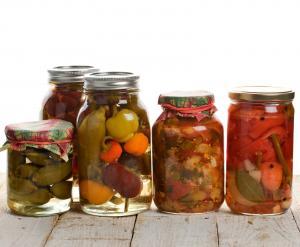Are you aching to feel a closer connection with the land around you? Looking for new ways to become self-sufficient? You probably fit the definition of a homesteader without even knowing it. Before you start imagining scenes from the Little House books, keep in mind that being a homesteader doesn’t require vast tracts of land. Instead, it is a mindset of moving towards taking care of yourself in as many ways as possible.
Currently, the movement towards modern homesteading can’t be slowed down. People around the country are tearing up their lawns to plant vegetables instead, starting their own backyard chicken flocks and even raising bees, backyard meat rabbits and more. No matter where you live, whether it’s a city apartment or in the middle of a corn field, there are things you can do right now to start adopting the mindset of a homesteader, and this guide is ready to show you how.
What Does Homesteading Really Mean?
Though the term homesteading once categorized people fleeing the city to settle government lands of the American west, homesteading today is defined more as moving towards a lifestyle where you can provide everything you need for yourself. Few people today are truly self-sufficient, but it’s never been easier to take steps towards taking care of yourself.
Space Shouldn’t Be a Concern
Long ago, homesteaders relied on twenty or more acres of land to feed their livestock, grow their crops and provide space for their barns and sheds. You don’t need to do that today. Instead, it’s entirely possible to start homesteading right at home. Even a small yard provides plenty of space to start taking care of yourself.
11 Easy Ways To Start Homesteading (even if all you have is a tiny lawn)
1. Start Some Raised Beds
Everyone can benefit from beginning to grow their own produce, and the first steps towards gardening are probably easier than you think. By following the “Square Foot Gardening” method of Mel Bartholomew, you can grow an incredible amount of produce in some really tiny spaces. By carefully planning out what goes where and growing exactly enough for your family, a tiny bit of lawn can produce some big benefits for your kitchen table.
2. Grow Crops in Containers
No space to dig in the dirt? You can grow a wide variety of crops in container gardens instead. Because containers can be easily moved, you won’t have to worry about them taking up too much space on your patio, and you can even take them inside when the weather gets too cold. Peppers, tomatoes, potatoes and herbs are all top quality container plants, and you’ll be amazed how much food you can actually produce from them.
3. Raise Chickens
It once was common for every family to have their own small flock of chickens to provide them with fresh eggs, but in decades past the ability to keep chickens in city places slowly became illegal. Thankfully, those policies have been reversed around much of the country, and homestead-minded people everywhere are starting to enjoy keeping their own feathered flocks again. You don’t need a lot of space to keep chickens, as all they really need is a small coop (think the size of a dog house for three or fewer hens) and daily food and water. It’s a smart idea to create a safe run for them out of chicken wire to ensure the birds don’t get attacked by neighbor dogs or other predators, but with relatively little money invested upfront you will soon be able to fill your fridge with the freshest eggs imaginable.
For tips on how to best get started with chickens, check out Fresh Eggs Daily by Lisa Steele.
4. Start a Worm Bin
Eating a healthy diet means you probably have plenty of food scraps that you aren’t sure what to do with. If you’ve been tossing them in the trash, you aren’t living up to your full homesteading potential! Not only is it super simple to turn your scraps into high quality soil by using a compost system, you can also feed them directly to worms. Yes, worms. Worm bins (called vermicomposters) are surprisingly efficient ways to turn scraps into soil, and worm castings (the compost made from worm poop) are some of the best natural fertilizer around. There are plenty of vermicompost systems you can buy online, or you can make your own following instructions like these. No matter what strategy you follow, you’ll be amazed how quickly a pile of red wrigglers can make your table scraps useful again.

5. Line Dry Your Clothes
Regular dryers use a lot of fossil fuels in the process of getting your clothes clean, but the process is almost entirely unnecessary. All you need is a long piece of rope and a few clothespins to start drying your clothing the good old fashioned way. Not only do clothes have a lovely scent when they are dried outside, you’ll also save money by not needing to run another expensive appliance.
With a little creativity, it’s even possible to line dry your clothes in chilly weather. Simply put them outside on a windy day, dry them in your basement or next to a heater and you’ll have your clothes clean and dry in no time at all.
6. Make Your Own Laundry Soap
Commercial laundry detergents are full of toxic chemicals that you then breathe in all day when you wear your clothes. A better option? Make your own homemade detergents or forgo them all together by trying to use soap nuts instead. Better for your water system and definitely better for your body, natural alternatives to commercial detergents are an easy way to keep yourself healthy.
7. Start a Sourdough Starter
A step for proper homesteading is learning how to make your own food, and few types of food are more comforting and nourishing than a thick slice of homemade bread. You can make your own chewy sourdough bread for pennies on the dollar and with just a few simple ingredients. All it takes is the time commitment to keep the starter fed for a few weeks before it’s ready, and soon you’ll be filling your diet with incredible tasting bread every week. Instructions for making your own sourdough can be found here.
8. Set Up a Small Aquaponics System
If you enjoy raising fish but are looking for a better way to do it, a homemade aquaponics system might be the solution you are looking for. Aquaponics systems are a combination of raising fish and growing plants in water, and the system largely keeps itself healthy because the fish poop helps fertilize the plants, while the plants clean the water for the fish. All it takes is a rain barrel, an afternoon of effort, and some baby tilapia and you’ll soon have a system that can keep your diet full of fish and fresh greens with hardly any maintenance effort.

9. Preserve Your Own Food
Even if the food you eat comes supplied from the local farmers’ market instead of your own backyard, there’s a lot you can do to enjoy it all year long. Turn your extra cucumbers into pickles, can your cabbage into sauerkraut and jar up some homemade apple sauce to enjoy through the winter months. The pride you’ll feel when you can reach into your pantry and pull out food you put there yourself knows no limits, and the process is actually simple once you get a canning kit and follow the advice in Canning For a New Generation by Liana Krissoff and Rinne Allen.
10. Rely on Herbal Remedies
The natural world has a lot of healing potential that most of us simply ignore, but by adopting the mentality of a homesteader you will know to look twice at everything around you. Growing medicinal herbs is simple with containers, and you can dry and store your creations for a home-based apothecary. The next time someone in your family suffers from the sniffles or a belly ache, you’ll be well supplied to help them out.
11. Trade Out Throwaway Products
Are you tossing out too much daily trash? Start investing in non-disposable goods instead. This means wash clothes instead of paper towels, glass containers instead of plastic, and even washing out your sandwich bag so you can use it twice. These changes might seem too little to matter, but the truth is that they change how much you need to buy every week, keeping you more self-sufficient with what’s already in the house.
Conclusion
Living closer to the land doesn’t require lots of land to get started. All you need is a mentality of self-sufficiency and the motivation to try something new. By finding ways to provide things for yourself you otherwise bought in stores, you’ll be learning to rely on yourself for your daily needs. Once you start the journey of living like a homesteader, you’ll gain much more respect for what you are capable of and the ways you can take care of yourself.
